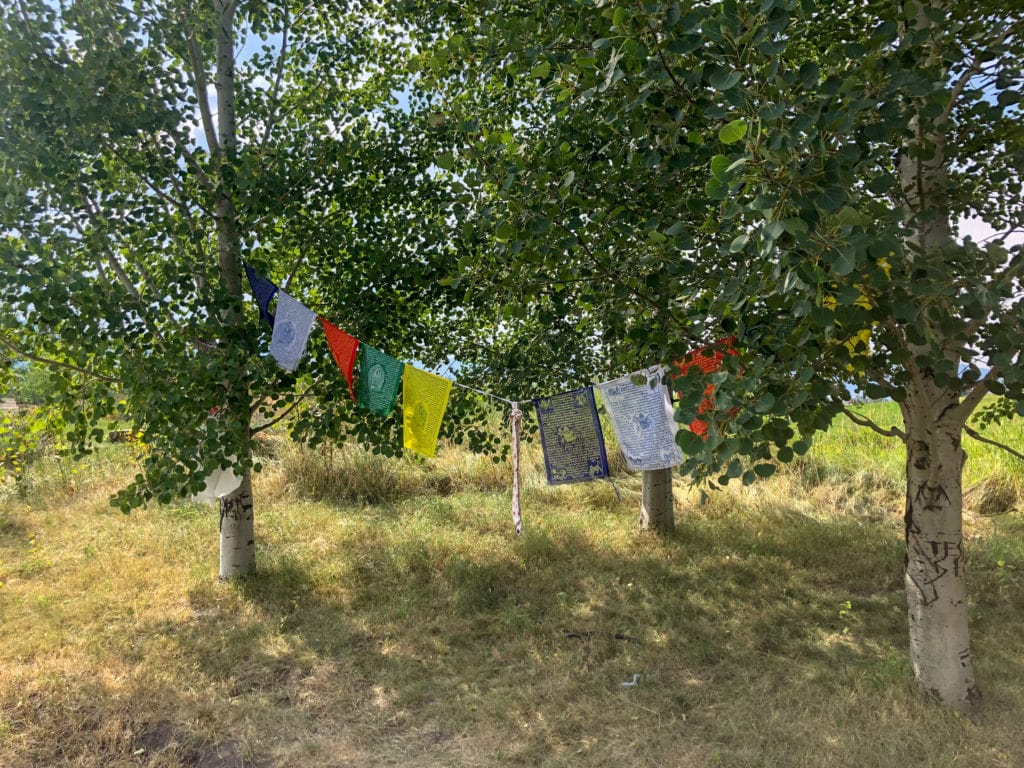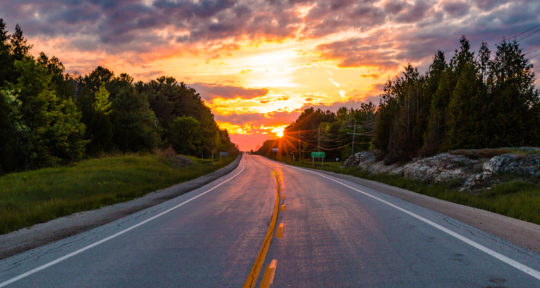When I decided to set out on a nine-month road trip through the West Coast and Rockies with my husband and dog, I had certain expectations. I expected to be floored by the height of Redwoods. I expected to eat until my belly swelled in Portland. I expected to see mountain goats, ice blue lakes, and snow-capped peaks in Glacier National Park. What I didn’t expect to come across was a Tibetan Buddhist center filled with more than 1,000 Buddha statues in Montana.
The Garden of One Thousand Buddhas is a 19-year-old public park, botanic garden, and Buddhist Center formed by Tulku Sang-ngag Rinpoche and the Ewam School of Tibetan Buddhism. As a child, the Tibetan spiritual leader had a vision of building a sacred space in the mountains. When he drove by the land in Arlee, Montana, he could see his prophecy coming to life. He purchased the plot in 1999, cast the first Buddha in 2000, and it’s been open to the public since.


“I know people see it as a Buddhist pilgrimage site, but it was built as a peaceful place for all religions,” says Claudette Carlson, the Garden’s administrator.
A spiritual detour
Impromptu stops often turn out to be the best part of a road trip. Following billboards and historic markers very rarely leads to a disappointing detour—but getting to the Garden of One Thousand Buddhas is a bit tricky. With no signage to guide us, we head south on Highway 93, and turn onto White Coyote Road. Dogs aren’t permitted in the Garden, so my husband stays with ours in the air-conditioned car and I set off down a narrow dirt path dotted with Tibetan prayer flags.
On my right are Great Stupas—pointed, dome-shaped monuments of Buddhism used to house sacred relics and represent the enlightened mind. There are eight total, signifying the eight major events in the Buddha’s life, from The Lotus Blossom Stupa of the Buddha’s Birth to The Parinirvana Stupa, which marks the Buddha’s entry into nirvana at age 81. The relics include everything from coins and stones to a Spiderman figurine.
Tibetan prayer flags. | Photo: Archana Ram Midway through the Garden is a pond with benches. | Photo: Archana Ram A yellow mandala represents an offering to all religions. | Photo: Archana Ram
“We remove everything—you’d be surprised how much it builds up. If we didn’t you wouldn’t be able to see the stupas,” Carlson says. “But it’s in people’s hearts to leave something.”
For visitors who aren’t too familiar with Buddhism, there are plenty of pointers explaining the symbolism and significance throughout the garden. It’s easy to walk through, appreciating the landscaping and serenity, but there are some rules. You must walk in a clockwise direction—the Garden was built in a circular shape signifying the Dharma Chakra, or Dharma Wheel, which represents the Buddha’s teaching and moral discipline.
“When you turn the prayer wheel, it always goes clockwise,” Carlson explains. “The clockwise direction means blessings are being sent out, and counter clockwise means you receive blessings. We believe you’re sending out blessings even when you walk by the statues.”
Sculptures and self-care
During my visit, it’s hot, hazy, and feels as if a heater is blowing in my face—not exactly ideal meditation conditions. I see only three other people in the 10-acre Garden, but I follow the rules and start walking.
I encounter a yellow mandala, which represents an offering to all religions and is marked by idols from Hinduism, Chinese Buddhism, and more. “It’s for everyone to feel welcome,” Carlson says.


Just past the mandala is the first of many large stones etched with a quote by the Buddha: “You can search throughout the entire universe for someone who is more deserving of your love and affection than you are yourself, and that person is not to be found anywhere. You yourself, as much as anybody in the entire universe, deserve your love and affection.”
The Garden is both stark and abundant—the former thanks to its location in the desolate Jocko Valley. The abundance is provided by the Dharma Wheel that forms the Garden. It’s brought to life via 1,000 India-sourced, mini stupas forming the outer wheel; more than 1,000 Montana-made, hand-cast Buddha statues arranged in the shape of eight spokes; and a 24-foot-tall Yum Chenmo, The Great Mother of Transcendent Wisdom, in the center of it all. In contrast with the all-white Buddha figures, Yum Chenmo is bathed in regal reds, yellows, blues, and golds.

The spokes represent the Buddha’s eightfold path through life, and each spoke doubles as a pitstop, where you can read another etched quote in stone and observe the land. Midway through is a pond with benches and Tibetan prayer flags. It’s a perfect spot to rest—and offer the small suggested donation.
Both the Buddhas and stupas have plaques dedicating the idols to loved ones. Carlson says they have reached their quota for dedicated Buddhas, but some stupas are still up for grabs at about $200 per piece.
Finding peace
The Garden is set on the land of the Confederated Salish and Kootenai Tribes of the Flathead Reservation. Carlson explains that anyone can purchase the land as long as the tribes are willing to sell it. After buying a portion of the land in 1999, Rinpoche has since expanded the Garden grounds even further with the help of donors.
The Garden is conscious of integrating the two communities. “We’re on Native American land,” Carlson says. “[The tribes] come to all our gatherings. They definitely have a voice here.” In particular, the tribes have a strong presence at the Garden’s annual Peace Festival, held in September. Tribe members speak, perform Native American ceremonies, and showcase traditional dances. Rinpoche usually presents them with gifts from Tibet or items significant to the tribes, such as arrows.


At this year’s festival, a local elder helped consecrate the long-awaited Peace Pavilion. The new venue will host live music as well as a weeklong series during which Rinpoche—who typically visits the Garden a few times a year—performs Tibetan Buddhist teachings and ceremonies. It’ll also be available for weddings, yoga retreats, and weary travelers like me who are seeking shade with a side of enlightenment.
While I’m unable to find much relief from the heat, it’s easy to keep walking—it’s mesmerizing to be in Big Sky Country, surrounded by so many statues. I have to keep reminding myself that I’m still in Montana.
If you go
The Garden of One Thousand Buddhas is open year round, from 8 a.m. to dusk Memorial Day to Labor Day and 9 a.m. to dusk in the winter. Tours are offered April through October.









